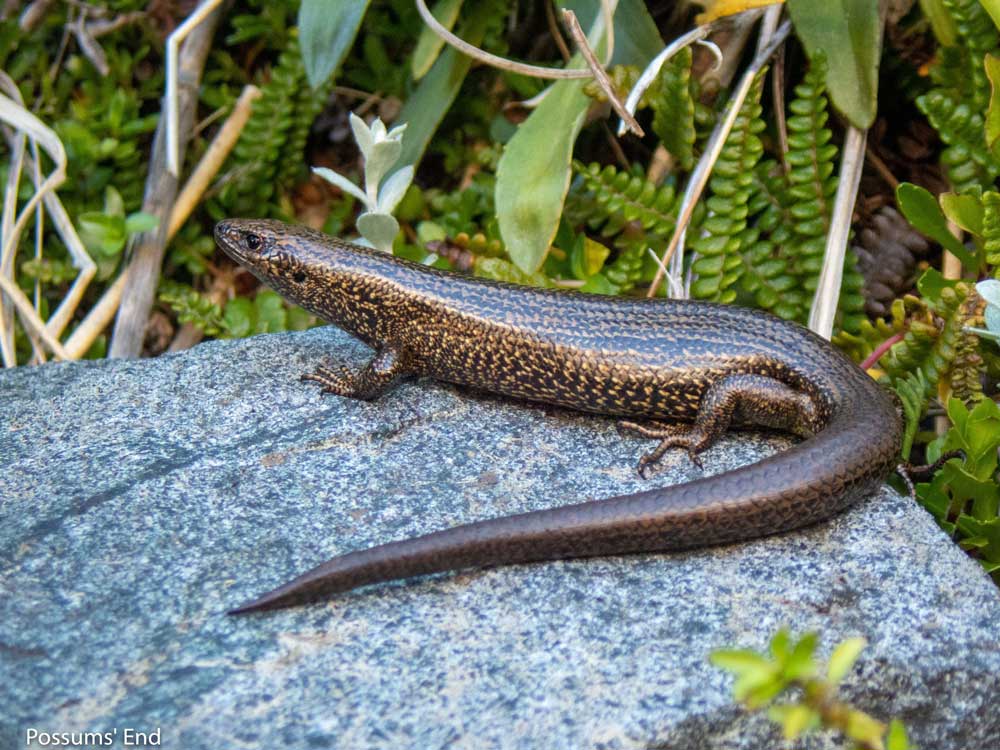The reptile was first discovered in 2014. Its name means skink that ‘lives in the footprints of mighty glaciers.”
In an effort to help save the awakōpaka skink (Oligosoma awakopaka) from extinction, the Auckland Zoo in New Zealand is caring for five of these lizards as part of an effort in conjunction with the Department of Conservation (DOC) and Ngāi Tahu to save this species from extinction.
The reptile was first discovered in 2014. Its name means skink that ‘lives in the footprints of mighty glaciers.” They are known to occur near the Homer Saddle in Te Waipounamu (the South Island’s) Te Rua-o-te-moko (Fiordland). A heavier than normal seeding event threatens to drive mice and stoat, which prey on these skinks, closer to their habitat, which could have an extinction level consequence on the skink if the predators reach the skink’s natural habitats.
New Zealand Scientists Want To Regulate Cats After One Regurgitated 28 Lizards
Green Geckos Benefit From Soft Penned Release In New Zealand
“Having awakōpaka skink at the Zoo is a huge responsibility and we acknowledge the trust that Ngāi Tahu and DOC have placed in us caring for these taonga” says Auckland Zoo’s head of animal care and conservation, Richard Gibson, head of animal care and conservation said in a news release announcing the arrival of the skinks. “It’s essential we grow a safety net population when we’re just minutes from midnight in terms of their extinction risk. It is also an invaluable opportunity for us to learn everything we can about this little-known species to inform next conservation management steps.”
“We are building on a highly successful track record with other critically endangered skinks like the cobble and Kapitia skinks from the West Coast. Our ability to also care for these first awakōpaka skinks paves the way for progressing to a full-on breeding programme, once further animals, including (critically) females, can be located, and rescued,” Gibson said.
Awakōpaka Skink Information
The awakōpaka skink is a cryptic species that is not very well studied. They are a pale brown in coloration and with a yellow base color and dark brown/black flecks that create an indistinct stripe along the edges of the back. They grow to about 15 centimeters in length. Its natural history is not known, and they are assumed to feed on invertebrates and native fruits. eDNA samples found the five collected skinks to have eaten beetles and spiders. They are presumed to bear live young and seem to be avid sun baskers. The current captive animals have been observed lying fully exposed under the basking lamps that provide the hot day time temperatures that mimic their wild environments.



